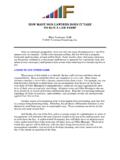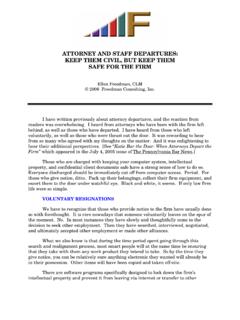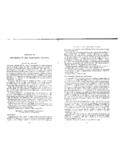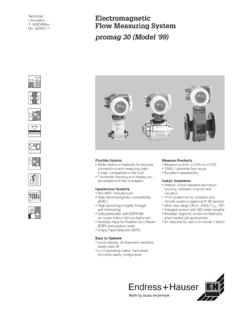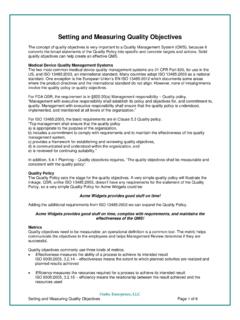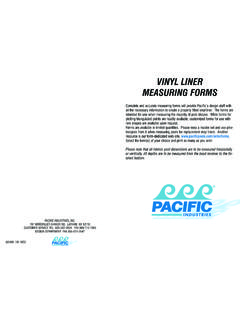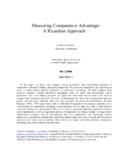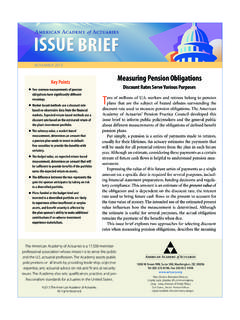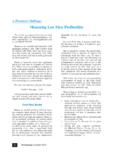Transcription of MEASURING BILLING AND COLLECTION …
1 MEASURING BILLING AND COLLECTION efficiencies Ellen Freedman, CLM 2005 Freedman Consulting, Inc. A number of years ago I wrote an article about the types of financial reporting which were important for management to monitor at law firms. (See Financial Reporting Essentials in the Winter, 2000 issue of the PBA Solo and Small Firm Section Newsletter, or contact me for a reprint.) If your firm has already implemented those reporting strategies, I d like to take it up a notch in sophistication by exploring how you can measure your BILLING and COLLECTION performance. Those of you who have heard me present a seminar recall that I frequently assert that good business decisions are made based on solid analysis and data. In the absence of data, one is merely shooting from the hip, which may or may not work out. Before you can conclude you are doing a good job in BILLING and/or COLLECTION of receivables, you should be able to measure your performance, and then compare those measurements to benchmark data.
2 The Survey of Law Firm Economics published by Altman Weil is an example of a resource you can use as a benchmark. Turnover of Work In Progress The first measurement is that of the number of days of unbilled Work In Progress (WIP). This measurement will tell you how effectively your firm is BILLING , turning over your inventory of time and disbursements. The faster you bill, the faster you collect. The faster you bill, the less likely you will have BILLING disputes based on poor recollection, and the more likely you will be to collect. The faster you bill, the less capital the firm will require to invest in its inventory of time and costs. Sluggish BILLING habits identified will need to be corrected. First, you want to determine the average value of time and disbursements recorded on a daily basis for the entire firm as a whole. To do this, add up the total dollar value of time and disbursements recorded for anywhere from 60 to 120 days.
3 The longer the period analyzed, the harder the computation, but the more reliable and representative the resulting number will be. Exclude amounts recorded on either contingent matters, or transactional matters which are paid upon closing. Note that if your firm has different rates for different clients, an hour on one client may be worth more or less than an hour on another. That is why you are adding up dollar values, and not hours. Divide the total by the number of days you ve used in your calculation. This will provide you with the average daily value of WIP produced. MEASURING BILLING AND COLLECTION efficiencies Page 2 of 4 Freedman Consulting, Inc. (215) 628-9422 Next, you want to find out how many days of WIP remain unbilled. To calculate this you want to take your entire WIP, and deduct any large amounts unbilled on either contingent matters, or transactional matters which are paid upon closing.
4 You will have already marked those relevant clients and/or matters in doing the first calculation. Take the resulting number, and divide it by the daily value generated, as calculated in the previous paragraph. The result is the number of days of outstanding WIP. So, for example, if you ve added up 90 days worth of recorded WIP (excluding contingent and transactional matters), and the total is $750,000, the average daily value produced is $8,333. ($750,000 divided by 90). If your total WIP (excluding contingent and transactional matters), is $640,800, then you have over 76 days of outstanding WIP. ($640,800 divided by $8,333). Compare your result to the benchmark survey. You ll see clearly if you are doing better or worse than most firms. Now repeat this exercise by individual lawyer and by practice group or department. Note that not all departments or even individual lawyers may lend themselves to this analysis if their work is contingent or transactional.
5 Analyze as much as you can. Compare those numbers to the overall firm numbers. Create an action plan for improvement. Perhaps you will need to impact compensation for poor performers. Some firms find an oversight committee helpful. Some firms even appoint a partner as BILLING czar . Start working first with anyone above the average. Eventually your firm should work with everyone to improve (decrease) the number of days of outstanding WIP. Turnover of Accounts Receivable The next calculation to produce, benchmark and monitor is that of the number of days of outstanding accounts receivable. This will let your firm know whether it, and individual lawyers and practice areas, are efficiently and effectively managing outstanding bills. First, you need to calculate the average daily billings. To do this, add up the total of all bills for a period of anywhere from 60 to 120 days. The larger the number of days measured, the more representative the average billings per day will be.
6 Divide the total by the number of days summed to arrive at your average billings per day. Note that you want to make sure you use the net bill amount, after discounts or courtesy reductions are applied (but not write-offs.) You should not reduce your total by any bills paid by retainers held in escrow. The total of those bills should be included, even though you have the cash readily available to pay them. Next, take the total amount of Accounts Receivable, and divide it by the average daily billings, as computed in the paragraph above. The result will be the number of days of outstanding receivables. MEASURING BILLING AND COLLECTION efficiencies Page 3 of 4 Freedman Consulting, Inc. (215) 628-9422 For example, let s say that you ve added up your daily billings for the ninety days in October, November and December. The total billings equal $712,500. That means that your average daily BILLING is $7,916. ($712,500 divided by 90 days.)
7 You find that your total receivables as of 12/31 is $1,648,000. That means that your firm has over 208 days worth of accounts receivable outstanding. ($1,648,000 divided by $7,916.) You can compare this number to benchmark data, but in no event should your firm be willing to accept a number in excess of 90 as acceptable. Sixty days would be a reasonable target. You can also compare this number to the terms you have set forth in your engagement agreements with clients. Note how different a perspective this provides from a simple account receivable aging report, from which you cannot easily tell if you are in fact doing a better or worse job of collections than other firms, or even your own firm in a previous time period. For maximum accuracy, you should look at the accounts receivable figure as of the same period you used to calculate the average daily billings. For example, if you are looking at total receivables as of 6/30, and you are looking back 90 days, you should use the daily billings for the 90 days which end on 6/30.
8 I suggest that you also calculate this number by individual attorney, and by practice group or department, and compare those results to the firm s overall average. Design and implement a receivable management program. There are a number of good resources to turn to in designing such a program. (See Dialing for Dollars: Accounts Receivable Call Management in the May/June 2003 issue of The Pennsylvania Lawyer or contact me for a reprint.) Unlike the WIP management which concentrates remedial activity on those practice groups or departments or individual lawyers who are above the overall firm average, your receivable management should be implemented firm-wide in order to be effective. However, your compensation committee should be taking into serious consideration those individual lawyers who are above the overall firm average. In addition, your executive committee should be taking practice groups or departments which are above the overall firm average into account when doing strategic planning.
9 Even a small improvement in number of days invested in outstanding receivables can have a significant impact on cash and profit. Let s take the example above where we ve calculated that the firm has 208 days worth of receivables outstanding. If this can be improved by just 18 days, to bring the outstanding receivables down to 190 days worth, the firm will achieve a one-time cash improvement and additional profit of approximately $142,488, which is distributable to partners. ($7,916 average daily billings times 18 days.) If the firm instead uses that money as working capital in order to avoid borrowing, at an interest rate of 8 percent that translates into a savings of approximately $11,399 per year. Monitor effectiveness of your WIP and receivable management by MEASURING your investment in them again each year. Remember, a smaller WIP or account receivable may just mean business is down, not that you are managing them better.
10 Regardless of whether MEASURING BILLING AND COLLECTION efficiencies Page 4 of 4 Freedman Consulting, Inc. (215) 628-9422 your firm grows or contracts, these measurements will still give you an accurate view of whether you worsened or improved your management in these vital areas compared to prior periods. You can then adjust your actions and policies accordingly. A version of this article originally appeared in the September 6, 2004 issue of the Pennsylvania Bar News 2005 Freedman Consulting, Inc. The information in this article is protected by copyright. Visitors may print and download one copy of this article solely for personal and noncommercial use, provided that all hard copies contain all copyright and other applicable notices contained in the article. You may not modify, distribute, copy, broadcast, transmit, publish, transfer or otherwise use any article or material obtained from this site in any other manner except with written permission of the author.
